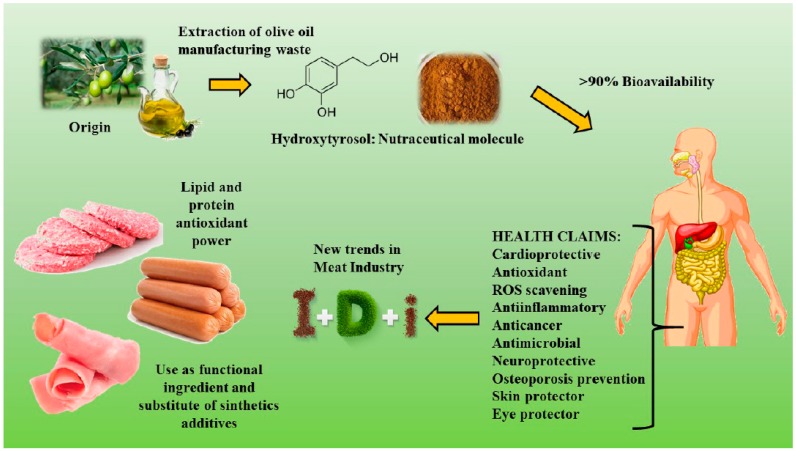Fibromyalgia (FM) is a chronic syndrome and it primary symptom is the widespread pain caused by multiple things but specially due to allodynia and hyperalgesia. Other symptoms of fibromyalgia includes sleeplessness, muscle stiffness and twitches, sensitivity to noise, light, touch, smell. Headache, lack of energy, burning sensation, skin issues, IBS, and many more, infect you can see the brief list of symptoms of fibromyalgia and their management here.
Fibromyalgia is consider as highly disabling condition with annual estimated healthcare cost of over $6000 (or 5000 EUR) 1 . There are many factors related to the causes and development of Fibromyalgia and few researchers linked it to the central sensitization.
In the present research work, they perform an experiment for the first time on nLC-MS/MS study in primary dermal fibroblasts from a healthy volunteer and from a FM patient. You can read more details about experiements, results in this research paper.
Research Abstract: Fibromyalgia (FMa) is a chronic and highly disabling syndrome, which is still underdiagnosed, with controversial treatment. Although its aetiology is unknown, a number of studies have pointed to the involvement of altered mitochondrial metabolism, increased oxidative stress and inflammation.
The intake of extra virgin olive oil, and particularly of one of its phenolic compounds, hydroxytyrosol(HT), has proven to be protective in terms of redox homeostatic balance and the reduction of inflammation.
In this context, using a proteomic approach with nanoscale liquid chromatography coupled to tandem mass spectrometry, the present study analyzed:
(i) Changes in the proteome of dermal fibroblasts from a patient with Fibromyalgia versus a healthy control, and
(ii) the effect of the treatment with a nutritional relevant dose of hydroxytyrosol.
Our results unveiled that fibroblast from fibromyalgia show a differential expression in proteins involved in the turnover of extracellular matrix and oxidative metabolism that could explain the inflammatory status of these patients.
Moreover, a number of these proteins results normalized by the treatment with hydroxytyrosol. In conclusion, our results support that an hydroxytyrosol-enriched diet could be highly beneficial in the management of fibromyalgia.
Authors: Jorge A. Ramírez-Tejero , Esther Martínez-Lara, M Ángeles Peinado, María Luisa del Moral and Eva Siles
Department of Experimental Biology, University of Jaén, 23071 Jaén, Spain; jrtejero@ujaen.es (J.A.R.-T.); elara@ujaen.es (E.M.-L.); mapeinado@ujaen.es (M.Á.P.)
Published on 9 August, 2020
Research Study Citation: Ramírez-Tejero, Jorge A., Esther Martínez-Lara, M. Peinado, María Luisa Del Moral, and Eva Siles. “Hydroxytyrosol as a Promising Ally in the Treatment of Fibromyalgia.” Nutrients 12, no. 8 (2020): 2386. Read it Here.
Hydroxytyrosol: Health Benefits
Hydroxytyrosol is a phenolic compound drawn from the olive tree and its leaves as a by-product obtained from the manufacturing of olive oil. It is considered the most powerful antioxidant compound after gallic acid and one of the most powerful antioxidant compounds between phenolic compounds from olive tree followed by oleuropein, caffeic and tyrosol. Due to its molecular structure, its regular consumption has several beneficial effects such as antioxidant, anti-inflammatory, anticancer, and as a protector of skin and eyes, etc. – NCBI
[Research Reference: Martínez, Lorena, Gaspar Ros, and Gema Nieto. “Hydroxytyrosol: Health benefits and use as functional ingredient in meat.” Medicines 5, no. 1 (2018): 13.]

Hydroxytyrosol is also beneficial for physical exercise as it increases the production of glutathione (an endogenous antioxidant) and decreases the production of lactic acid and subsequent muscular atrophy.
Few Questions and Answers related to hydroxytyrosol
Q: What foods contain hydroxytyrosol?
> The olives, leaves and olive pulp contain large amounts of hydroxytyrosol
Q: How many hydroxytyrosol can I take a day?
Maximum daily intake of 51.06 mg /person (0.85 mg/kg body weight/day for an individual weighing 60 kg)
Q: Is it safe to take olive oil daily?
Olive oil can be used safely as 14% of total daily calories. This is equal to about 2 tablespoons (28 grams) daily. Up to 1 liter per week of extra-virgin olive oil has been used safely as part of a Mediterranean-style diet for up to 5.8 years. Olive oil might cause nausea in a very small number of people.
Q:How much hydroxytyrosol is in olive oil?
The content of hydroxytyrosol is largely dependent on the oil quality. Amounts range from 14 mg/kg in extra virgin olive oil, up to <2 mg/kg.
References:
- > 1 Sicras-Mainar, A.; Rejas, J.; Navarro, R.; Blanca, M.; Morcillo, A.; Larios, R.; Velasco, S.; Villarroya, C. Treating patients with fibromyalgia in primary care settings under routine medical practice: A claim database cost and burden of illness study. Arthritis Res Ther. 2009, 11, R54.
- > Chinn, S.; Caldwell, W.; Gritsenko, K. Fibromyalgia Pathogenesis and Treatment Options Update. Curr. Pain Headache Rep. 2016, 20, 25.
- > Häuser, W.; Fitzcharles, M.A. Facts and myths pertaining to fibromyalgia. Dialogues Clin. Neurosci. 2018, 20, 53–62.